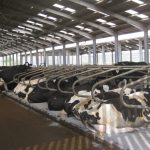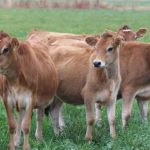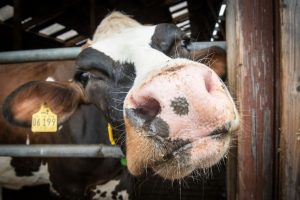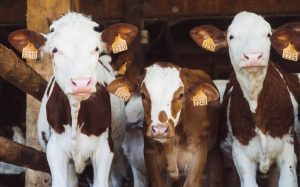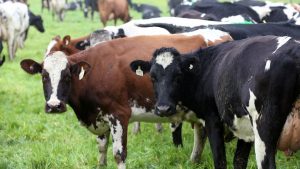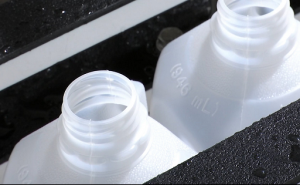
All dairy farmers, regardless of their system, could benefit from understanding and improving total milk solids produced a cow a year as a means of driving sustainability.
That is according to Rose Jackson, head of genetics for Kite Consulting, which launched a report, “Efficiently achieving 1,000kg: Maximising milk solids for sustainable dairy production”, at the recent UK Dairy Day, held in Telford, Shropshire.
Speaking to Farmers Weekly after the launch, Rosie said milk solids production a cow is often tracked by grass-based, block-calving herds.
However, it is relevant to all system types, particularly considering the shift in focus in dairy markets from milk volume to total milk solids.
Maximising the weight of fat and protein produced a cow would also increase the sustainability of a dairy business and reduce its environmental impact, as fewer cows would be required for the same amount of fat and protein production, she said.
Target
The average UK herd produces 675kg of milk solids a cow a year, according to NMR’s 2022 key performance indicator report. However, some herds are achieving about 1,000kg.
Rosie said this should be a target for year-round-calving, housed herds. But all farms, regardless of system, should be looking to “move up the dial”.
“First of all, know where you are and then come up with a sensible target by working with your advisers,” she said (see “How to calculate your herd’s kilos of milk solids”).
The report highlights four key factors influencing solids production, which are applicable to all systems.
These are followed by profiles of seven all-year-round calving, predominantly housed, well-run herds, each producing about 1,000kg of milk solids a cow a year.
The report includes the following advice:
1. Genetics
- Up to 50% of a cow’s ability to produce high milk solids is due to genetics. This is the “low-hanging fruit” to drive milk solids production
- Milk fat and protein are highly heritable
- Have a clear and focused breeding strategy, which is reviewed and changed over time
2. Herd health
- Cows will only achieve high levels of production if health is excellent
- In the herds profiled, mastitis incidence ranged from six to 16 cases in every 100 cows (UK mean is 29.7)
3. Environment
- Prioritise cow comfort and lying times to promote rumination and foot health
- Providing the best possible, well-ventilated environment enables cows to express their full genetic potential for total milk solids
4. Calf management
- The first 50 days of life are important for influencing the future performance of the heifer
- A common theme among the herds profiled was good colostrum management, including testing supplies and using results to make management decisions.
The seven herds were all feeding a high level of calf milk replacer at a 15% inclusion rate, so calves were getting about 1,000g of calf milk replacer a day.
That shows 1,000g of calf milk replacer is needed in these early days to get 1,000kg of milk solids a cow a year once they are in lactation, said Rose.
How to calculate your herd’s kilogrammes of milk solids
To work out the average milk solids a cow a year in the herd:
Average milk solids a cow a year = (average milk yield a cow a year x average milk fat %) + (average milk yield a cow a year x average milk protein %)
Example: For a herd producing 9,989 litres a cow a year at 3.38% protein and 4.54% fat:
Average milk solids = (9,989 litres x 0.0338) + (9,989 litres x 0.0454)
= 797kg of milk solids a cow a year

